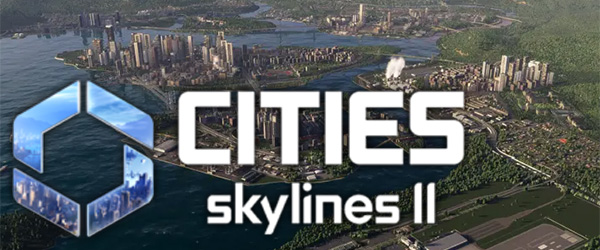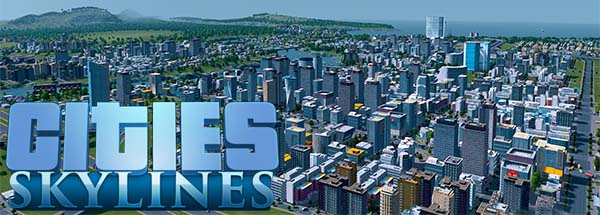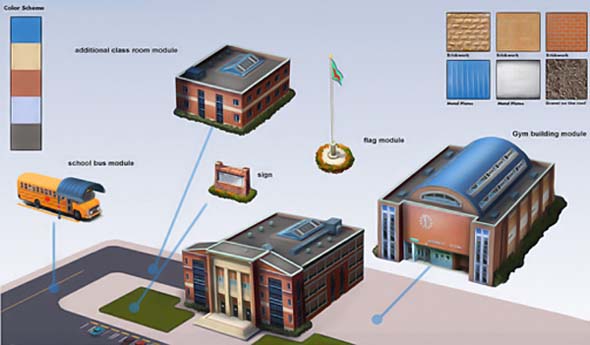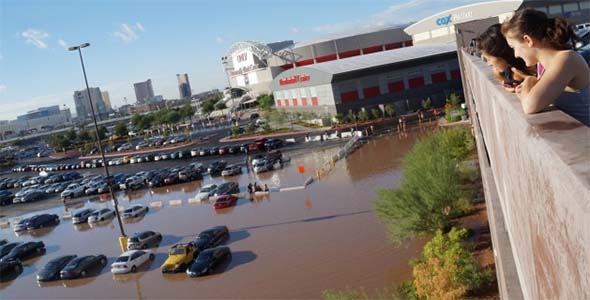
I've been playing Cities: Skylines for almost 10 years. As soon as I started playing it, I recognized it as the definitive city-building game. It blew its contemporaries, such as SimCity (2013) and Cities XL out of the water. It was a smash success that developed a massive following and spawned 11 full expansions, 4 mini-expansions, 21 asset packs, numerous music packs, and thousands of player-created mods and custom assets.
Creating a sequel to a game that is so beloved and content-rich can be challenging or daunting. Sequels to extensively-expanded games, such as any given entry of The Sims, Civilization, Crusader Kings, World of Warcraft, Rock Band, and so forth, run the extreme risk of feeling bland, empty, and incomplete compared to their content-rich and/or mechanically-complex predecessors. This can leave the sequel feeling underwhelming to long-time audiences, who might return to the older game because they crave the extensive, familiar content. The Sims in particular is infamous for stripping out popular expansion content, and then selling that content back to consumers again (and again) as an expansion pack for the sequel. The most notable example is probably that every Sims game has a "Pets" expansion, because EA could never bite the bullet and just put dogs and cats in the vanilla launch of a sequel.
Sequels to expanded games often strip out popular content to re-sell as expansions.
The sequel to Cities: Skylines is a bit of a mixed bag in this regard. On the one hand, yeah, a lot of content from the original game is absent from the sequel, and the options for what players can build can feel a bit sparse. On the other hand, the vanilla release of Cities: Skylines II retains something from almost every one of the original game's expansions. It even includes content and mechanics that were part of some of the smaller content packs and from popular mods.
The vanilla game includes a day/night cycle that was introduced in the original's After Dark expansion. Some of the economic models of the After Dark and Industries expansions have been expanded in scope to apply to the entire game, thus alleviating some of the need for explicit tourism, leisure, or specialized industry districts. It took the winter themes of Snowfall and fleshed it out into a full seasonal cycle. It includes some of the weather and disaster events from Natural Disasters, as well as some of the early-warning and shelter infrastructure. It includes modular upgrades and customizations to certain buildings and infrastructure, as well as large industrial areas, that fills a similar role as the modular areas of Parklife, Industries, Campus, and Airports (though I'll talk more about this mechanic later in the review). It includes pedestrian roads from Plazas & Promenades. It includes eco-friendly variations of utilities that were part of the Green Cities expansion. And of course, it has road-building and transit-planning tools that largely leave Mass Transit in the dust.
It even includes sports parks and parking lots, which were late DLC content released for the original game in the last couple years. And the road-building and traffic-management tools have much of the functionality from the popular "Road Anarcy" and "Network Extension" mods. And that's to say nothing of all the brand new content, mechanics, and more complicated simulation! So even though it is not as full or content-rich as its predecessor with its double-digit expansions (how could it be?!), Cities: Skylines II is still a fully-featured and content-rich city-builder that can be played for many hours before going stale.
Some content and mechanics from almost every CS1 expansion are included in CS2's launch.
But as I said, there is quite a lot of content from the original game that did not make the cut, and which is sorely missed. For one thing, bicycles and bike lanes aren't in the game at launch, which is a kind of baffling decision (considering this game is developed in Scandinavia, where bicycling is huge). There also aren't any walls or fences or quays, and the tool for disabling zoning on either side of a road is strangely absent. So it's back to using pedestrian paths to remove zoning from arterial roads. Zoning is actually quite a bit of a pain in the ass in the sequel, and I am frequently fighting with the road layout, zoning squares, and pedestrian paths to try to get my city to look the way I want.
If you were particularly fond of leveling up and expanding things like industrial parks, nature preserves, amusement parks, universities, and so forth, then you might be disappointed by their absence. In fact, recreation, leisure, and tourism options are very spares in the sequel, as it lacks the tourism and leisure districts of the After Dark expansion. You also won't be building any small fishing villages, since Sunset Harbor is the one expansion that doesn't have anything being carried over into the sequel.
To its credit, the vanilla release of Cities: Skylines II feels more content rich and mechanically-compelling compared to the vanilla release of the original Cities: Skylines. But there's so much absent from the original game, that I un-install the original from my PC with a degree of trepidation.
There is some content from CS1 that is conspicuously absent. [More]
a2c0f15c-0983-4034-a8e5-7561b2c76190|0|.0
Tags:Cities: Skylines, Cities: Skylines 2, Colossal Order, Paradox Interactive, city, city management, city simulation, seasons, industry, parking, tourism, poverty, homelessness, welfare, subsidies, ray-tracing, volumetric lighting, Sedona, Barstow
This week, Colossal Order finally formally announced the anticipated Cities: Skylines 2 and released an official announcement trailer. Unfortunately, the trailer does not have any actual gameplay footage, nor are there any actual in-game screenshots available (that I know of). However, I do want to take some time to go through what is shown in the trailer and make some inferences about what may or may not be in the actual game. Even though the trailer is a pre-rendered cinematic, instead of actual gameplay, we can assume that what is shown in the trailer is intended to represent the actual content of the game -- at least on an abstract level.
First and foremost, here is the trailer itself, in its entirety. I recommend you watch it before reading on.
Cities: Skylines 2 has been formally announced by this trailer.
I will be breaking the trailer down based on 3 criteria. The first is what the narration says, which may provide some hints as to how the game will play. The second is what is actually shown in the trailer. The final category is things that are not included or implied by the trailer.
[More]
cee4240a-11c4-42a4-bfae-e7b10fd50503|0|.0
Tags:Cities: Skylines, Cities: Skylines 2, Colossal Order, Paradox Interactive, city management, trailer, urban decay, waterfront, seasons, parks, traffic, beach, parking, homelessness

Some of the suggestions from my first wishlist have actually been implemented in Cities: Skylines. Naming roads, and adding directional traffic overlays were recently added in the Mass Transit expansion, and the previous Snowfall expansion incorporated some of my ideas for seasonal cycles (minus the part where the seasons actually cycle from one to another). There's still a lot of items from that wishlist that haven't been implemented. I also have come up with some new ideas for things I'd like to see in further expansions (or maybe a sequel?).
Taking the best ideas from its competitors
Even though Cities: Skylines is, by far, my favorite (and probably the objective best) city-building / city-simulation game of the past decade, there are still some features and ideas from the inferior games that I really like. In my first wishlist, I already talked about how much I liked the modular building mechanic of SimCity (2013).
I won't go into too much detail of why I liked that concept (even though the actual implementation was a little weak) because I invite you to read the original post. Suffice it to say, I liked the idea of certain pieces of city infrastructure (such as power plants, schools, universities, police stations, airports, government buildings, etc.) actually growing along with the city. Being able to upgrade an existing building to add additional functionality, additional capacity, or to specialize it in some way, was (in my opinion) a much more interesting and engaging process than simply plopping another copy of the same building every so often, or adjusting a global budget slider, simply to meet increasing demand.

I still think SimCity had the right idea with its modular buildings.
In that first wishlist, I also briefly mentioned the Cities XL series. There isn't much in XL (or XXL) that is done as well (or better) than what is offered in either SimCity (2013) or Cities: Skylines, but I did neglect one idea that I think was probably the most clever, interesting, and fun part of the XL series of games: the ability to "fill" an area with "decoration". Put simply, Cities XL allows the player to fill any unoccupied area of the map (that is at least partially enclosed by roads) with one of several different types of decorative landscaping.
Landscaping options include a grassy park area with trees, an open-air "flea market" with kiosks and street vendors, various plazas / courtyards, and even a makeshift construction site. These decorations aren't functionally different (the flea market doesn't produce any commerce or jobs, for example), but each decorative area applies a very small environmental beautification effect that increases happiness and land value for adjacent homes or businesses.
Decorative areas in Cities XL allows you to fill-in irregular shapes with city-beautification projects.
From a more aesthetic standpoint, Cities XL's decorative areas allow the player to make very efficient use of space, to fill any empty dead space, and to create your own custom parks and plazas that conform to whatever shapes the outlining roads happen to be. Want a park in the middle of a large roundabout? Want a plaza space at the point of a 45-degree (or narrower) intersection? XL allows you to do such things without having to go into an asset-editor to make a custom ploppable.
Despite having muuuuuch better tools for creating curved and angled roads, Skylines doesn't really have any equivalent to these decorative features from XL that allow us to fill-in gaps left by our pretty, rounded or angled roads... [More]
61f9c85f-04f1-43df-ada3-cf727a4682d8|0|.0
Tags:Cities: Skylines, Cities: Skylines: After Dark, Cities: Skylines: Snowfall, Cities: Skylines: Natural Disasters, Cities: Skylines: Mass Transit, match day, Paradox Interactive, Colossal Order Ltd., PC, SimCity, CitiesXL, CitiesXXL, city simulation, park, decoration, parking, natural wonder, national park, beach, ski resort, tourism, leisure, history
Football season's starting to get under way. The draft is coming up later this week, and I'll be interested in seeing who John Fox and the Bears select in their efforts to rebuild the team. However, there's a more personally-interesting story that popped up this week: according to several reports, the Oakland Raiders are showing interesting in relocating to Las Vegas. According to multiple sources, Raiders' owner Mark Davis has already visited Las Vegas in preliminary talks about relocating his team, and he will return on Thursday to meet with the Nevada tourism officials to discuss UNLV's planned domed stadium.

Mark Davis met with Sheldon Addleson and Las Vegas representatives about possibly moving the Raiders to Vegas.
This all sounds like a terrible idea, and I don't think it's a good move for either the Raiders or the city of Las Vegas. I'm not a big fan of the domed stadium proposal to begin with, mostly because I think the location is a disaster of traffic management waiting to happen. UNLV wants to build the stadium on or near UNLV's campus in order to encourage live-in students to attend games, since many of them might lack cars and can't travel out to Sam Boyd Stadium out in the middle of nowhere. Seems understandable, except that the proposed area is already a major traffic arterial that is prone to congestion, and the stadium is planned to replace the current parking lot of the Thomas and Mack basketball arena. The Strip, and the roads around it, already suffer from severe congestion and gridlock on a pretty regular basis, especially on Saturday nights when UNLV games are typically played. And that's without 60,000 people trying to funnel into a stadium!
Las Vegas is a commuter town (and UNLV is mostly a commuter school), but Vegas lacks any large-scale mass transit options. Our bus system is lackluster, and we don't have any kind of light rail. The monorail system that runs along half the strip doesn't even stretch to downtown or to the airport, and won't enable opponent teams' fans to travel from the airport to the stadium - let alone support commuters wanting to come from the suburbs of Henderson, North Las Vegas, Summerlin, or the rapidly-growing southwestern corner. In addition, I doubt that the location of the stadium on-campus will help all that much with student attendence at UNLV games. I think a bigger factor in students not attending is that many of them have part-time jobs and work on Saturdays. So they wouldn't be attending no matter where the stadium is located.
UNLV is considering building a new football stadium [LEFT] in the place of the
Thomas & Mack Center's existing (and barely-sufficient) parking [RIGHT]
And then there's the parking issue. Without public transit, fans are stuck driving to the game, and Las Vegas citizens are (from my experience) frustratingly-averse to carpooling. If you build a 60,000-seat stadium, you'll need a 60,000-car parking lot to go along side it. Except this stadium is replacing the existing parking lot outside of the Thomas and Mack. So where will everybody park? Are they going to add ten floors to the existing southern parking garage? They can't build an underground parking garage; that would be a disaster waiting to happen. Las Vegas is located in a valley, and UNLV's campus is at one of the lowest points in that valley, which means when we get our late August and September "monsoons", the area is prone to flooding. UNLV's parking lots have been known to flood during heavy rainstorms. An underground parking garage would likely turn into a subterranean swimming pool when a similarly heavy rainstorm inevitably happens.

The UNLV campus has flooded during heavy rainstorms, damaging vehicles and leaving students and visitors stranded.
But I digress...
UPDATE MAY 10, 2016:
More recent reports have indicated that the Raiders would continue to play in California until a new stadium is constructed in Las Vegas. They would not be playing in Sam Boyd Stadium. This certainly makes the move seem more serious to me, since most of my doubts regarding Davis' sincerity was the result of Davis suggesting that the Raiders might play at Sam Boyd for a couple years while waiting for the new stadium. So the following few paragraphs have now been rendered moot, so feel free to disregard.
In any case, such a stadium won't be completed for years! I'm not even sure if it's even been fully approved yet. But these reports are saying that the Raiders could be playing in Las Vegas as early as the 2017 NFL season. So where would they play? Mark Davis supposedly has already visited Sam Boyd Stadium, and has approved of it as a temporary home for the Raiders until the new stadium gets built.
... [More]
f6710e51-8c26-4596-ac56-b9102d4cd7f6|0|.0
Tags:Oakland Raiders, Raiders, Las Vegas Raiders, Las Vegas, Nevada, UNLV, football, NFL, Sam Boyd stadium, stadium, Thomas and Mack Center, Mark Davis, Sheldon Adleson, traffic, parking, mass transit

I've been playing the somewhat-underwhelming After Dark expansion for Cities: Skylines. I love Skylines, but there are a lot of elements of the game that I wish would change, and a few things that I would like to see added. I hope (and expect) that Colossal Order will continue to support the game for many years to come with new DLC and expansions, and this blog will outline some of the features, mechanics, and items that I would like to see changed or added to the game.
It should go without saying that, since this is a PC game (with a built-in asset creator), many (if not all) of the following suggestions might already be implemented in one or more mods. I haven't played much with mods in this game yet, so I don't know what might be available. In any case, there's no reason why ideas already implemented in mods can't also be turned into formal game systems by the developers.
Table of Contents
The one thing I miss from SimCity (2013): Modular buildings
As much as I love Cities: Skylines, and as much as I think it blows the SimCity reboot out of the water, there is one mechanic of SimCity that I absolutely love, and that occasionally makes me want to go back to SimCity: building upgrades. It's a bit ironic that SimCity, with its ridiculously limited city size, is the game that allows you to add additional components to existing buildings that makes them take up more physical space; yet, Skylines, with its expandable city plots, uses only prefab buildings of set sizes. So the game that puts a premium on real estate availability encourages you to leave empty space around certain buildings. I guess it makes sense. SimCity's limited size means you can't afford to build whole new buildings and must make due with what you have. Skylines allows you much more space to just keep copy-pasting the same schools and garbage dumps every few blocks.
Having to build new schools every four or five blocks can become tedious in Skylines, especially when the city starts to cross into being a metropolis. I like that the game requires that you build more infrastructure in order to keep up with population growth, but I wish that you could push the existing buildings a bit further before having to build whole new ones... [More]
0d10b666-b01c-4a5a-b3bd-c0c7af4faf36|4|5.0
Tags:Cities: Skylines, Cities: Skylines: After Dark, Paradox Interactive, Colossal Order Ltd., PC, SimCity, city simulation, day, night, seasons, climate, tourism, leisure, beach, government, parking, cul de sac, solar
|

| 12 | | | | | | | 60 | | 11 | | | | | | | 55 | | 10 | | | | | | | 50 | | 09 | | | | | | | 45 | | 08 | | | | | | | 40 | | 07 | | | | | | | 35 | | 06 | | | | | | | 30 | | 05 | | | | | | | 25 | | 04 | | | | | | | 20 | | 03 | | | | | | | 15 | | 02 | | | | | | | 10 | | 01 | | | | | | | 05 |
|